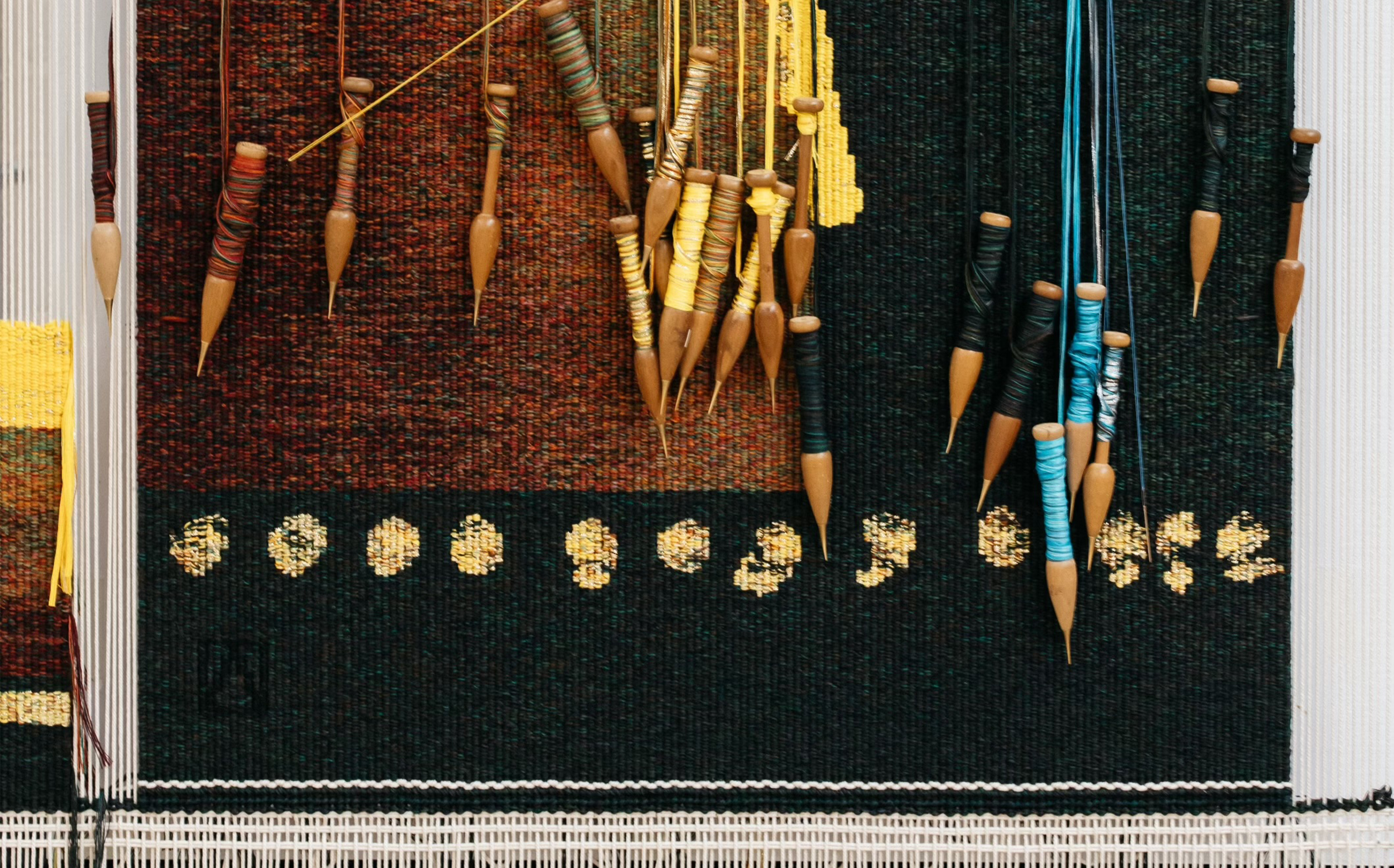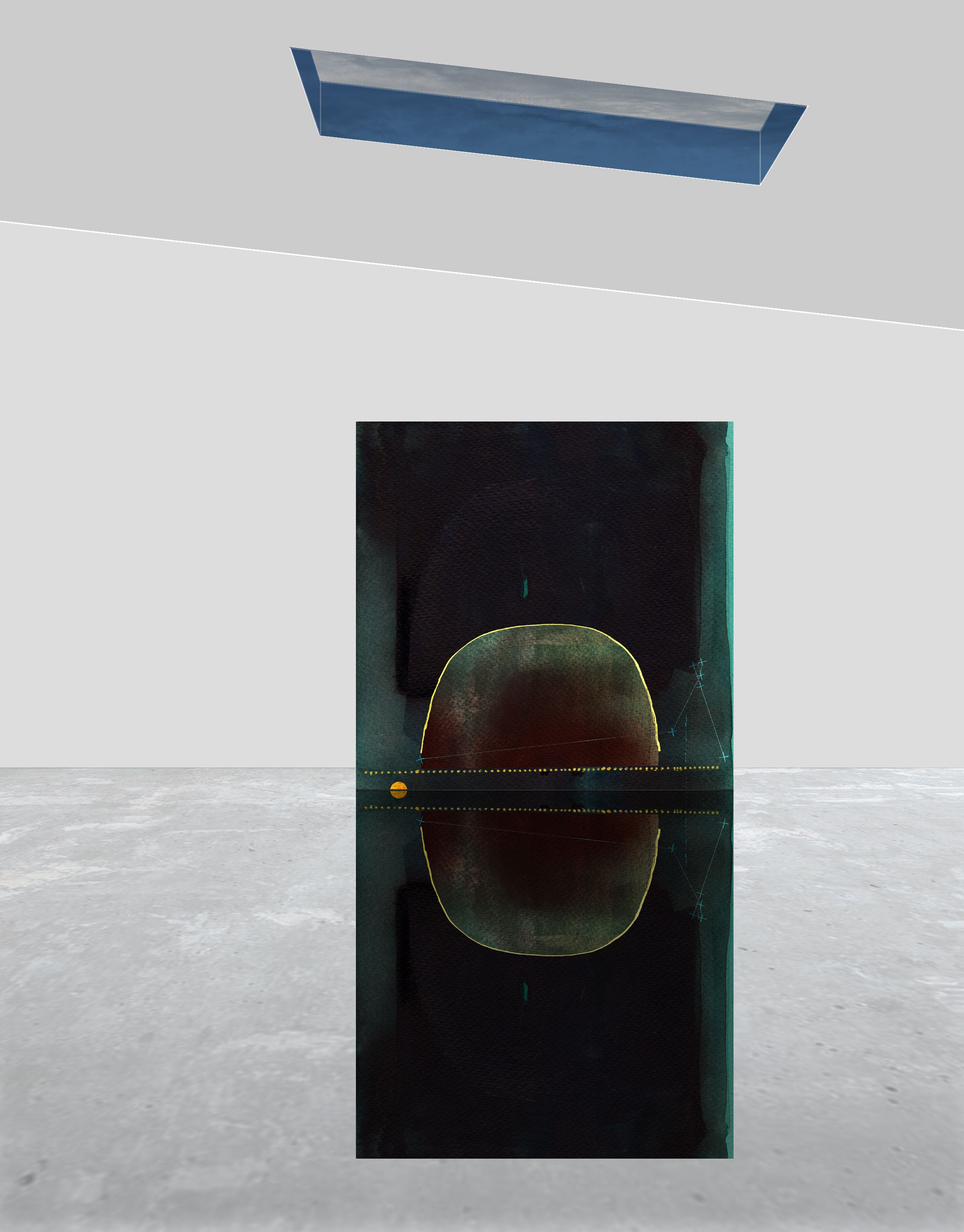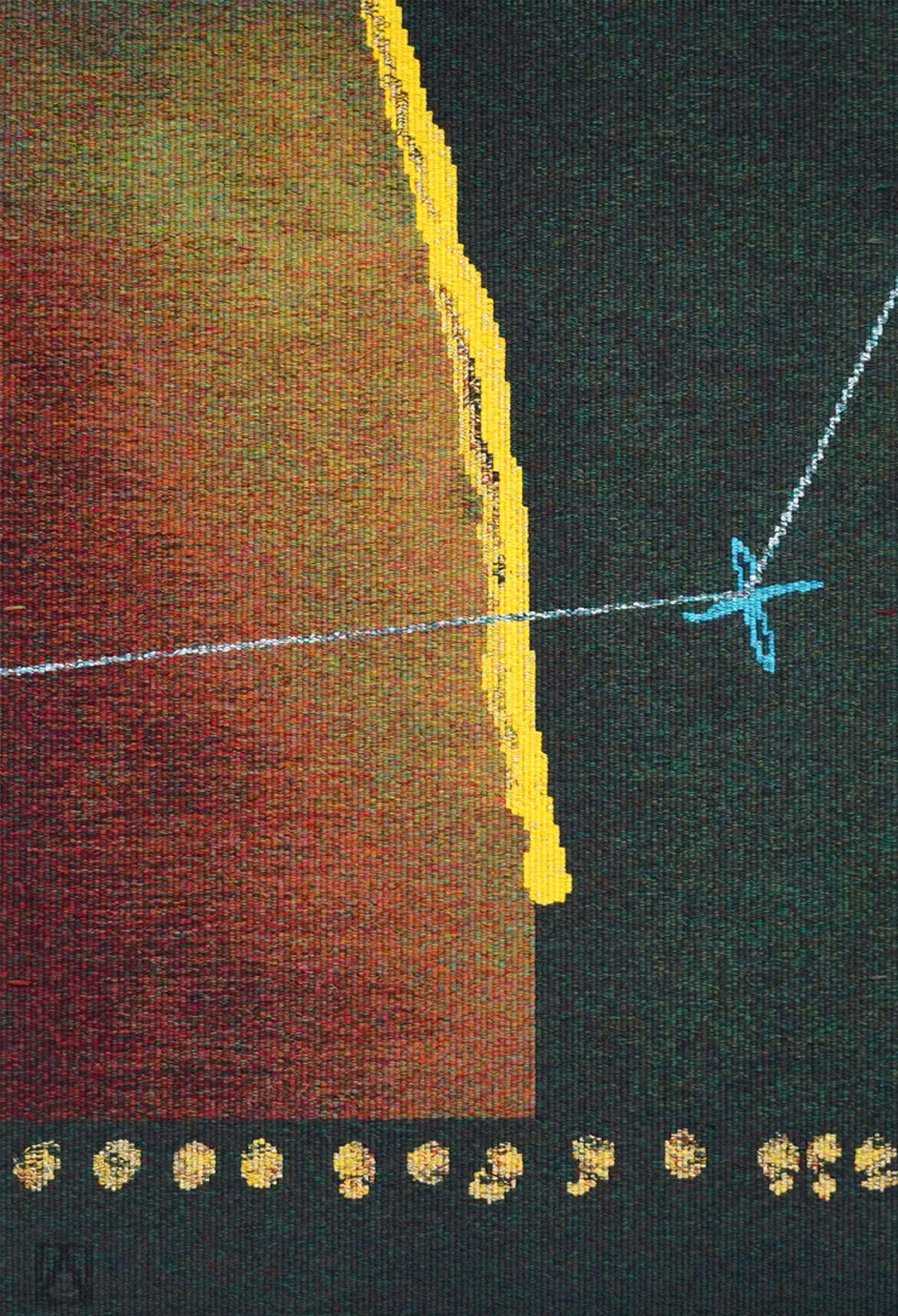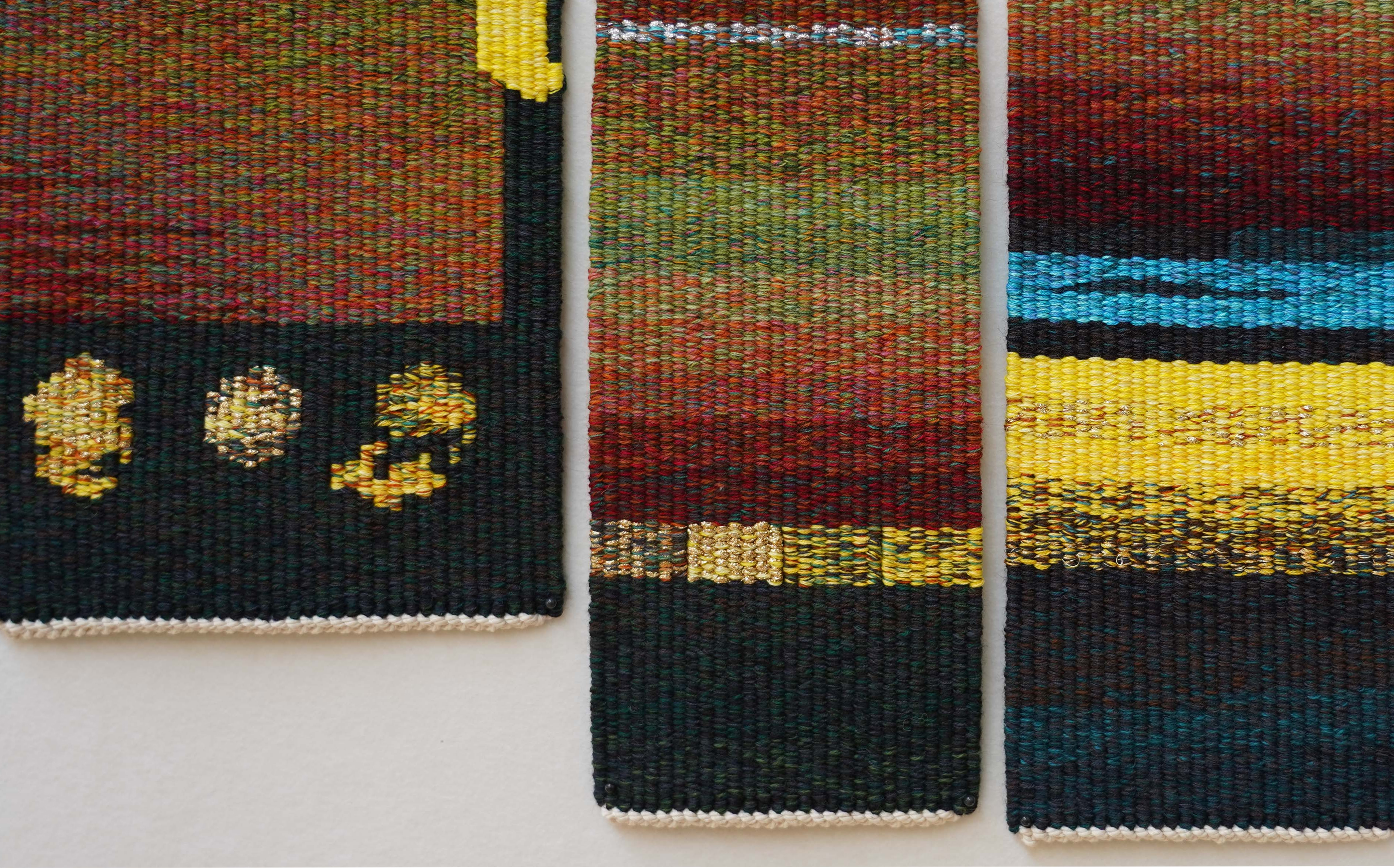






Solstice
Emerald Wise and Beth George.
First Prize, Australian Tapestry Design Prize for Architects 2023
Designed for Kerstin Thompson’s award winning Bundanon Art Musuem.
Awarded by the Australian Tapestry Workshop
2023
Published in Architecture AU
Emerald Wise and Beth George.
First Prize, Australian Tapestry Design Prize for Architects 2023
Designed for Kerstin Thompson’s award winning Bundanon Art Musuem.
Awarded by the Australian Tapestry Workshop
2023
Published in Architecture AU
Emerald Wise and Beth George's winning entry for the 2023 Tapestry Design Award for Architects, to be constructed in collaboration with Tim Gresham.
An image completed by the viewer, Solstice takes full form with its reflection. A response to memories shared by its authors—which centre around a constellation of water bodies across Country—as well as to the sheen of the gallery floor, the work plays with light and visual mirroring.
The tapestry is compositionally concerned with universality, with the commingling of independent parts, with separation and union, and with the passage of time. In these ways, it echoes with the ever-sharper need to consider ecology and connectedness in the Anthropocene, and with the spatial and emotional tensions entailed by the pandemic: we weathered it together, as together as you could be, and since have been separate. We make the tapestry design together online, from Naarm and Boorloo. We swam in cold water together again in April. The sun sets where we met, over the sea at South Beach, and Bundanon is marked with a vertical crosshair.
Materiality and Construction
The tapestry is traditionally woven, drawing on strong, graphical traditions, utilising two scales: the distanced, and the highly proximate, through the design’s bold composition and its textured, nuanced detail. Bright gold define the edge of the circular land form, illuminating its edges like a lunar eclipse. Inside this form, detail and richness amass. The perimeter is dark and velvety-rich, producing a deep surface both tactile and reflected. Azure thread marks each swim: each river, pool, bath and bay. Bright, metallic thread connects these locales.
On the gallery floor, we use anamorphic projection to make the tapestry’s counterpart so that it forms a square without perspectival diminishing. This oblong will be a dark piece of cut glass, summing up the stillness and reflectivity of a water hole.
There are four elements contributing to the composition: the tapestry, the glass floor panel, projected light to illuminate the landform and metallic threads, and the viewer whose gaze combines them. Added to this will be the effects of the existing skylight, and reflected light from the glass towards the ceiling.
An image completed by the viewer, Solstice takes full form with its reflection. A response to memories shared by its authors—which centre around a constellation of water bodies across Country—as well as to the sheen of the gallery floor, the work plays with light and visual mirroring.
The tapestry is compositionally concerned with universality, with the commingling of independent parts, with separation and union, and with the passage of time. In these ways, it echoes with the ever-sharper need to consider ecology and connectedness in the Anthropocene, and with the spatial and emotional tensions entailed by the pandemic: we weathered it together, as together as you could be, and since have been separate. We make the tapestry design together online, from Naarm and Boorloo. We swam in cold water together again in April. The sun sets where we met, over the sea at South Beach, and Bundanon is marked with a vertical crosshair.
At Solstice,
Halves meet,
From different edges of the country,
Country crossed many times, fast
and slowly.
Time shared by reflective streams and shimmering pools
is held in our bodies,
Water clear and water dark.
Our threads weave together
now and then.
Halves meet,
From different edges of the country,
Country crossed many times, fast
and slowly.
Time shared by reflective streams and shimmering pools
is held in our bodies,
Water clear and water dark.
Our threads weave together
now and then.
Materiality and Construction
The tapestry is traditionally woven, drawing on strong, graphical traditions, utilising two scales: the distanced, and the highly proximate, through the design’s bold composition and its textured, nuanced detail. Bright gold define the edge of the circular land form, illuminating its edges like a lunar eclipse. Inside this form, detail and richness amass. The perimeter is dark and velvety-rich, producing a deep surface both tactile and reflected. Azure thread marks each swim: each river, pool, bath and bay. Bright, metallic thread connects these locales.
On the gallery floor, we use anamorphic projection to make the tapestry’s counterpart so that it forms a square without perspectival diminishing. This oblong will be a dark piece of cut glass, summing up the stillness and reflectivity of a water hole.
There are four elements contributing to the composition: the tapestry, the glass floor panel, projected light to illuminate the landform and metallic threads, and the viewer whose gaze combines them. Added to this will be the effects of the existing skylight, and reflected light from the glass towards the ceiling.